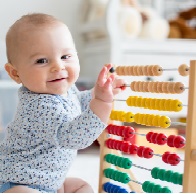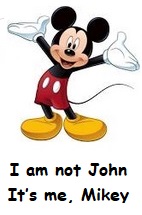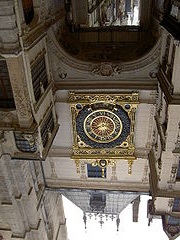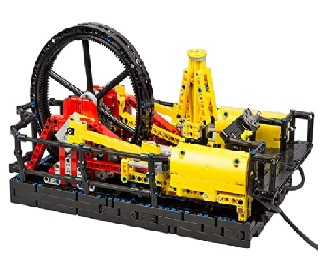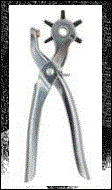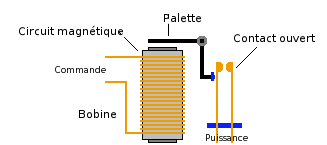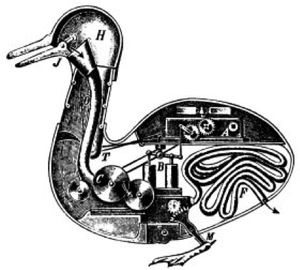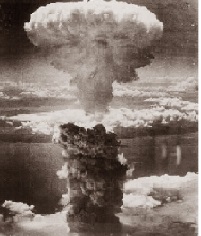If the computer as such only existed for a few decades from its origins dating back many areas for some very long time. One example is the abacus and abacus counters. These are the first instruments to aid calculations. We'll see as the story of the count is not without interest to help us understand the position count and especially binary codes.
Calculating machines
Abacuses and abaci
The abacus native to Asia where he still has followers would be the first "calculator". It is actually a device to record the calculations.Although very basic instrument already has some features informative. We use it to illustrate what counts position : the abacus has several stems, each corresponding to a digit (units, tens, hundreds, thousands, etc.). these rods are threaded balls which position form a code from 0 to 9 or from 0 to 10 depending on the model of the tumbler. Facilitate the abacus calculation "showing" and thus "remembering" the result of the last operation.

The Roman abacus were also instruments support the representation, storage and handling of numbers. The balls of the abacus are here replaced by stones (calculi in Latin) placed in parallel slots each representing multiples of 1, 10, 100, 1000 etc..
For us who are used to Arabic numerals, it is strange that it took so long for our ancestors to adopt a writing numbers based on the position counts as doing and yet abacus abacuses. The Romans, for example, were forced to change their signs to write the number 1 as it represents a unit (I) ten (X) one hundred (C) or a thousand (M). Imagine under these conditions as it would be difficult to do written calculations.
The position count (and zero) was conceived in India in the fourth or fifth century, and was adopted by the Arab mathematician Al-Khwarizmi around the year 820 and is imposed in the West after the Crusades XII thor XIII th century.
Slide rule
The slide rule was invented in 1620. It allows to approximate calculations: multiplication, division, square roots, logarithms etc.. and was used until the mid-70s (NASA engineers who sent the Apollo moon still used) The principles of this rule to calculate back to the Scottish mathematician John Napier (1550-1617) better known as the name of Napier.
Napier had imagined it should be possible to transform a multiplication operation in simple addition and to do this he invented logarithms.
The logarithm base b of a number N is the exponent to be attached to the base b for the number N.
All databases are conceivable logarithm and that advocated by Napier was the number e = 2.71828. This number has special properties and is known as the base of natural logarithms denoted "ln" on scientific calculators. The base 10 is also commonly used (key Log of our scientific calculators) The base 10 is also more convenient to demonstrate the value of logarithms.
Examples:
Log 10 1000 = 3, which reads: "base-10 logarithm of 1000 = 3 ".
Similarly Log 10 100 = 2 because 10 2 = 100 and log 10 = 0.001 10 -3 because -3 = 0.001
These simple examples will verify the following properties: log (A * B) = log A + log B and log (A / B) = log A - log B
is obtained that Napier had sought: a method to transform simple additions or multiplications divisions in simple subtractions.
The logarithm base b of a number N is the exponent to be attached to the base b for the number N.
All databases are conceivable logarithm and that advocated by Napier was the number e = 2.71828. This number has special properties and is known as the base of natural logarithms denoted "ln" on scientific calculators. The base 10 is also commonly used (key Log of our scientific calculators) The base 10 is also more convenient to demonstrate the value of logarithms.
Examples:
Log 10 1000 = 3, which reads: "base-10 logarithm of 1000 = 3 ".
Similarly Log 10 100 = 2 because 10 2 = 100 and log 10 = 0.001 10 -3 because -3 = 0.001
These simple examples will verify the following properties: log (A * B) = log A + log B and log (A / B) = log A - log B
is obtained that Napier had sought: a method to transform simple additions or multiplications divisions in simple subtractions.
Mechanical calculating machines
The first mechanical calculating machine dates from 1623 and was called "clock calculus" by its inventor, the German astronomer: Schickard Wilhelm (1592 - 1635)
Blaise Pascal (1523-1662), French philosopher and mathematician realized in turn, when he was still only 19 years old, a mechanical calculating machine: the Pascaline. It consisted of a series of gears, numbered from 0 to 9 and arranged such that each full turn of the wheel to make a move the next position. This machine was built in 1642 could only make additions and subtractions.
In 1673, Leibniz (1646-1716) German mathematician and (also) philosopher, perfected the Pascaline to make a machine capable of performing multiplications, divisions and square roots by successive additions or subtractions.
First automatic
The first automation capable of performing sequences of operations which was prerecorded sequence were initially unrelated to the calculation. From the fourteenth century some large clocks adorn our steeples or bell towers rang our times as complex sequences after it was hours, half-hours etc.. PLCs very popular in the eighteenth century imitated beings alive. There was even a chess player who had beaten Napoleon artificial but it was a hoax, a dwarf hidden under the table was operating mechanisms.
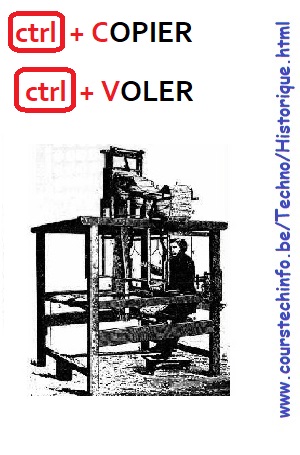
In 1725, CAP Basile had the idea to automate a silk loom by recording sequences of operations on punched tape. This is probably the first time that there has been a sequence of operations on removable media that is then read by an automatic machine to receive instructions.
The automatic loom most famous was that ofJoseph-Marie Jacquard (1752-1834) developed in 1805. The reasons for weaving were programmed using punched cards. The son of string that are raised or lowered between each pass of the shuttle are hung on hooks which may or may not stand as they are not under or holes in the punched card. Each pass of the shuttle is that the weavers called a frame.For each frame corresponded to a new card and perforated woven pattern was defined by a series of punched cards was called a " program. " This is the term currently used to designate a sequence of computer instructions.
Babbage
 The English engineer Charles BABBAGE (1792-1871) was the designer of two machines, although they could not be realized in his time for technical and financial reasons, have the merit of being the origin of concepts can still be found in our computers.
The English engineer Charles BABBAGE (1792-1871) was the designer of two machines, although they could not be realized in his time for technical and financial reasons, have the merit of being the origin of concepts can still be found in our computers.
The first of these machines was the "difference engine" . You should know that this time, the complex calculations (astronomy, navigation, artillery, etc.). Were made using numerical tables: tables of logarithms and trigonometric tables. These tables often involved mistakes and it is for this reason among others in 1821, Charles Babbage began to produce a machine capable of performing many repetitive calculations required to produce these tables using the method called "finite difference "hence the name of this machine!
The project was very (too) ambitious, this machine after calculating the values to be included in the tables was punching the lead plates which were used to print these results pages. There have been 25,000 coins for the machine, 10 years later, only 12,000 pieces were made and the project was abandoned in 1832.
Noting that in any case the difference engine would have been able to do the calculations for which was conceived, Babbage began to realize another machine, universal one, the "Analytical Engine" capable of performing n ' any sequence of mathematical operations by means of instructions stored on punch cards as in the Jacquard machine.
The "Analytical Engine" was already a fully mechanical architecture very similar to that of current computers. There are several basic concepts such as:
- an input unit for receiving the punch cards communicating to both instructions and data.
- a processing unit that Babbage called the mill (the mill) and foreshadowed the arithmetic logic units in our current processors.
- a control unit ( control unit ) which automatically monitors the internal succession of operations (fetch the data in memory, placing them in the mill, order a particular arithmetic operation, transfer the results etc..) This control unit also included a repeating aparatus for back loop as many times as necessary a series of instructions.
It is the separation of the control unit of the thread that makes it possible for the machine to any algorithm unlike the previous machines built to specific sequences of operations. - a unit that Babbage called the store ( store ) where rows are the data to be processed, intermediate results and final results to be released on punched cards. This unit therefore includes what is now called the memory and the output unit Babbage but did not distinguish between these two functions just as it did this analogy between storage and data human memory.

Ada Lovelace (1815-1852) was an associate of Charles Babbage's design for the Analytical Engine. It defines the principle of iterations and defines the principles of programming Babbage's machine.
She made a complete description of Babbage's machine and wrote some articles about it in French. It reads "The Analytical Engine weaves algebraic patterns as trades Jacquard weave flowers and leaves" .
Charles Babbage died penniless in 1871 and his son Henry Babbage who finished in part and a few years later that the Analytical Engine could make it operational. He donated to the Science Museum in London
In 1991, the 200th anniversary of Charles Babbage, we realized a reconstruction of a machine unlike simplified version reconsidered by Charles Babbage himself between 1847 and 1849 but had not had the opportunity to build his time. This machine weighs nearly 3 tonnes and is exposed to the Science Museum in London
Office Equipment
Herman Hollerith (1860-1929) developed an electromechanical machine designed to record the data collected in the U.S. Census 1890 . The data examined were recorded on punch cards which had 210 boxes for encoding all kinds of information.
presented Hollerith Here's how the thing: "This is a real algebraic notation or chemical in a letter which replaces a name: m denotes male , w feminine rk-Romanian Catholic gk Greek Catholic dt German, Serbo-Croatian sk o workman An unlettered moron cr, gs divorced, etc.. "
presented Hollerith Here's how the thing: "This is a real algebraic notation or chemical in a letter which replaces a name: m denotes male , w feminine rk-Romanian Catholic gk Greek Catholic dt German, Serbo-Croatian sk o workman An unlettered moron cr, gs divorced, etc.. "
In 1896, H. Hollerith founded the company "Tabulation Machine Corporation" in 1924 became "International Business Machines" : IBM
In 1937, George Stibitz (1904-1995), an engineer at Bell Labs, made the first binary calculator electromechanical developed from telephone relays and using Boolean logic by George BOOLEin the book "The Mathematical Analysis of Logic " published in 1854.

In 1936, Alan TURING (1912-1954) published an article in the principles of abstract machine that bears his name, the Turing machine , which in principle is capable of tracking algorithm. To do this, the control unit of a computer must be capable of directing the program communicated to him without any human intervention is required to conduct the program.
First computers
The ENIAC was a huge machine, it weighed 30 tons and consisted of 18,000 vacuum tubes. She worked in decimal, not binary. Each digit was coded using a series of 10 tubes "ring counter" transposition electronic gears of the first calculating machines. This machine was programmed manually by setting switches or connecting cables according to various configurations.
Although the vacuum tube is an electronic type technology (rather than electromechanical relays as) ENIAC is resumed or the principle of calculating binary calculator STBITZ nor the principle probably too theoretical Alan Turing.
ENIAC plans were completed in 1944, but the machine was not operational until 1946.
In 1944, the designers of the ENIAC, already preparing were joined by John von Neumann , who wrote the text while introducing the concept of the recorded program.
Hitherto programs were read directly from the processing unit on the tape or punched cards introduced at the entrance of the machine as it was done in the programmable Jacquard loom. Sequence changes the program could not be done without human intervention.For a portion of the program that was to be repeated it was reintroduced by hand stack corresponding maps.
The von Neumann architecture
Von Neumann pointed out that since the instructions are encoded in binary, they can take place in the computer's memory alongside the data. These instructions are executed in the order in which they are written, but it is possible to imagine the program jump instructions that instruct the controller to resume reading the instructions elsewhere in memory allowing in this way breaks automatic sequences, conditional jumps and loops programs. The control unit can then take a sequence of instructions and "decisions" without the assistance of a human operator.
The von Neumann machine is designed from digital electronic components and binary.
It consists of five sub-groups:
It consists of five sub-groups:
- A control unit
- A processing unit (arithmetic and logic)
- Main memory that contains the data so the program AND
- A data input unit
- An output unit of the results
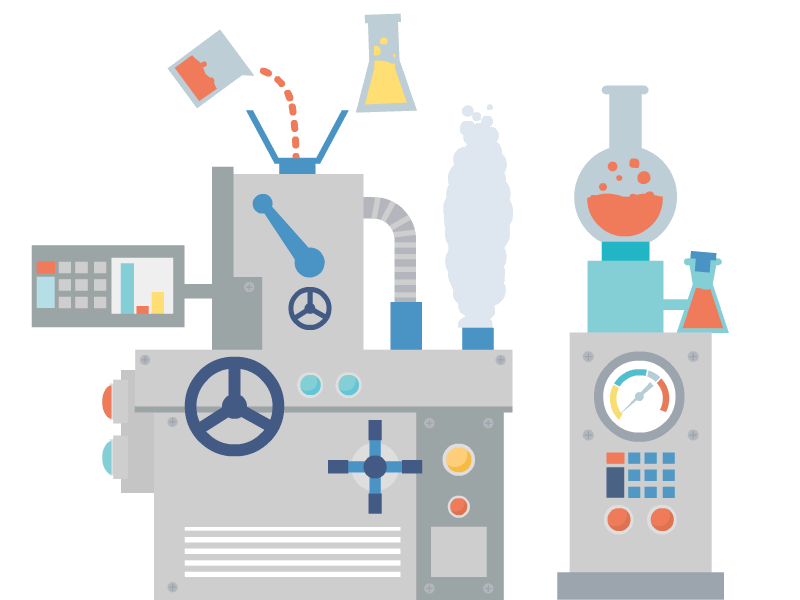
Today computers are still working on this principle. The distinction between the control unit and the processing unit may go unnoticed because these two elements are combined in the processor core.Similarly, the units of inputs and outputs are often combined in bidirectional ports to be connected to devices with which they exchange signals in both directions.
